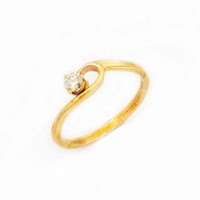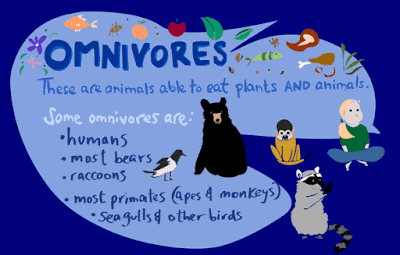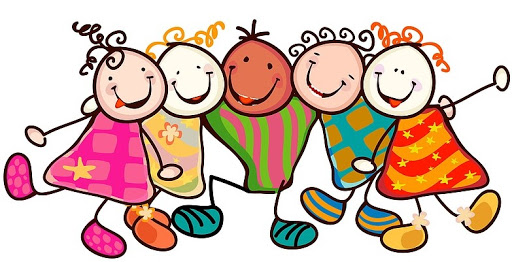Thursday, April 30, 2020
Fifth and Sixth Grade: How Do You Feel?
Hello everyone! Before April 26th you would have been in your house for 6 weeks. PHEW that is a long time. This lesson we are going to think about how we felt before April 26th and why. Then we’re going to think about how we feel now after April 26th and why.
Part 1
How did you feel before April 26th?
I felt ......because
 I have a lot of homework.
I have a lot of homework.
 I miss my friends.
I miss my friends.
 I can not go outside.
I can not go outside.
Part 2
How do you feel after April 26th?
I feel...... because
 I can exercise with my parents.
I can exercise with my parents.
 I can sit in the sun with my parents.
I can sit in the sun with my parents.
 I can see my friends.
I can see my friends.
 I can go to the park.
I can go to the park.
In a video say two emotions you are and why for part one. Do the same for part 2. If you did another activity from the list above you can use that instead. If possible take this video while you are out with your parents. Below is an EXAMPLE of what you can do. Put the video in Class Dojo.
Fourth Grade Natural Science: Reproductive Organs
Reproductive Organs
The organs in the reproductive system perform the function of reproduction and are different in men and women.
The Female Reproductive System
The Male Reproductive System
Part 1) Watch this VIDEO
Before Part 2 play this Reproductive Organs Kahoot! to review the functions and purpose of male and female reproductive organs.
Part 2) In English define the functions or purpose of the :Ovaries, uterus, vagina, vulva, prostrate, testis and penis. Please add this to ClassDojo.
Fifth Grade Natural Science
This past week and weekend we were allowed outside! Did you notice anything different?
Since we have been in lockdown the water and air around the world has become cleaner because of less human contamination. Animals have also started to come into cities...
Part 1- What are the benefits of the COVID-19 lockdown on the environment?
Part 2- Should humans have a lockdown every year to protect the earth and animals? Why or why not?
First Grade Natural Science: Herbivores
First Grade Natural Science: Herbivores
Herbivores are animals that only eat plants like leaves and seeds. Take a look at the video below to look at animals that are herbivores and what they eat!
Which herbivore is your favorite? Draw a picture of your favorite herbivore and the food it likes to eat. Please upload the video to Class Dojo :).
Tuesday, April 28, 2020
First and Second Grade: How Do You Feel?
During the past week you have been able to go outside and see nature, other adults and kids and more! How do you feel?
I feel .........
I feel...... because
 I can exercise.
I can exercise.
 I can see my friends.
I can see my friends.
 I can play with my friends.
I can play with my friends.
 I can go to the park.
I can go to the park.
Now that you are able to go outside, choose one emotion to describe how you feel and one reason from above.
A) You can draw a picture of how you feel and why
Or
B) Record yourself with your parents saying which emotion you are and why. Put the video in Class Dojo.
This is my example.....
I am excited to go outside because I can see my friends.
Monday, April 27, 2020
Fourth Grade Natural Science: Reproduction
What is Reproduction?
Through reproduction people have offspring (sons and daughters, children or descendants). Human reproduction is sexual. This means two people of different sexes....a woman and a man...create offspring. Since the offspring come from a man and a woman, their children will look similar to their parents, but the children are their on person.
Also, humans are viviparous. Do you remember what viviparous means?
Viviparous means babies grow (develop) inside the belly of the mother until the moment of birth. The Reproduction System is in charge of.... reproduction and is formed by the sex organs.
Puberty and Adolescence
The organs in the reproductive system are present in our bodies from birth. However, they start to mature when we reach puberty and hit development during adolescence.
What else happens when we develop during adolescence? Our bodies begin to change, but physical changes are different in men and women.
Third Grade Natural Science: Matter 2
Remember that MATTER is anything that takes up space.
All of these objects...milk, coke, bell, balloons, pears, books, a hot air balloon and a pen...are examples of matter!
What is volume and mass again?
Mass is the amount of matter that is formed. We can measure mass in grams (g) and kilograms (kg). Let’s do this exercises below to practice. (Put in Class Dojo).
1. On a separate piece of paper please write which objects you would measure in grams and which objects you would measure in kilograms. (Class Dojo)
2. How much do you weigh? Please write your weight (mass) in kilograms in Class Dojo.
Volume is the amount of space matter occupies. We can measure volume in Liters (L) or milliliters (ml).
1. Write how many milliliters are in each graduated cylinder. (Class Dojo)
What are Pure Substances and Mixtures again?
A pure substance is made of only one substance. For example, sugar is a pure substance because sugar is made of one thing, sugar.
A mixture is a combination of 2 or more substances. For example, sea water is made of water, salt and another minerals.
1. Please write a list of 5 pure substances you can find outside of your house. Write a list of 5 mixtures you can find inside of your house. ( Class Dojo).
Friday, April 24, 2020
Fifth and Sixth: Let’s Create
This week you are able to leave your houses while you are with your parents! I’m 100% sure you are happy to get out and see nature and hear other people’s voices. For class this week I would like you to....
1. Create a video while you are out with your parents. In the video say what you see, what you hear and what you did while you were outside. Post the video in English in class dojo.
_________________________________________________________________________________
This is an activity the lower grades have to do. For 5th and 6th grade this activity is optional. Enjoy!
1. Preheat oven to 135 degrees.
2.Have the children peel off the small pieces of crayons they find in their wastebasket.
3.Have the children break the crayons into smaller pieces (children may need help with this step).
4. Have them stack the crayons in the muffin pans. Mini muffin tins, round or shaped, work best. You can line the cans with aluminum liners, although it is not necessary. Talk to children about color combinations. If they need a crayon to color the sky, for example, they may want to use a combination of blues in a can. On the other hand, a random color scheme is also beautiful.
5. Bake the crayons for 15-20 minutes. Let the crayons cool. If the crayons stick, put the cans in a freezer for a while, before taking them out.
_____________________________________________________________________________
1. Precaliente el horno a 135 grados.
2. Pídales a los niños que pelen los pequeños trozos de crayones que encuentran en su papelera.
3. Pida a los niños que rompan los crayones en pedazos más pequeños (los niños pueden necesitar ayuda con este paso).
4. Pídales que apilen los crayones en los moldes para panecillos. Mini moldes para muffins, redondos o con forma, funcionan mejor. Puede forrar las latas con revestimientos de aluminio, aunque no es necesario. Hable con los niños sobre las combinaciones de colores. Si necesitan un crayón para colorear el cielo, por ejemplo, pueden querer usar una combinación de azules en una lata. Por otro lado, una combinación de colores aleatorios también es hermosa.
5. Hornee los crayones durante 15-20 minutos. Deja que los crayones se enfríen. Si los crayones se pegan, coloque las latas en un congelador por un tiempo, antes de sacarlas.
2.Have the children peel off the small pieces of crayons they find in their wastebasket.
3.Have the children break the crayons into smaller pieces (children may need help with this step).
4. Have them stack the crayons in the muffin pans. Mini muffin tins, round or shaped, work best. You can line the cans with aluminum liners, although it is not necessary. Talk to children about color combinations. If they need a crayon to color the sky, for example, they may want to use a combination of blues in a can. On the other hand, a random color scheme is also beautiful.
5. Bake the crayons for 15-20 minutes. Let the crayons cool. If the crayons stick, put the cans in a freezer for a while, before taking them out.
_____________________________________________________________________________
1. Precaliente el horno a 135 grados.
2. Pídales a los niños que pelen los pequeños trozos de crayones que encuentran en su papelera.
3. Pida a los niños que rompan los crayones en pedazos más pequeños (los niños pueden necesitar ayuda con este paso).
4. Pídales que apilen los crayones en los moldes para panecillos. Mini moldes para muffins, redondos o con forma, funcionan mejor. Puede forrar las latas con revestimientos de aluminio, aunque no es necesario. Hable con los niños sobre las combinaciones de colores. Si necesitan un crayón para colorear el cielo, por ejemplo, pueden querer usar una combinación de azules en una lata. Por otro lado, una combinación de colores aleatorios también es hermosa.
5. Hornee los crayones durante 15-20 minutos. Deja que los crayones se enfríen. Si los crayones se pegan, coloque las latas en un congelador por un tiempo, antes de sacarlas.
Fifth Grade Natural Science: Reusable paper, glass, plastic and aluminium
From the lesson about reusable paper, glass, plastic and aluminum cans PART 1.....
1. Explain how you created an item from already used paper, glass, plastic or aluminum.
2. Explain the purpose of your new created item.
3. Post a video in class dojo of your explanations.
For example, your video should be something like this....
Third and Fourth: Let’s Create
So far we have completed activities about “ What do you see?” And “ What do you hear?” This week you are allowed outside with your parents.
We are going to use what we have learned from our previous activities...... but first......
1. Preheat oven to 135 degrees.
2.Have the children peel off the small pieces of crayons they find in their wastebasket.
3.Have the children break the crayons into smaller pieces (children may need help with this step).
4. Have them stack the crayons in the muffin pans. Mini muffin tins, round or shaped, work best. You can line the cans with aluminum liners, although it is not necessary. Talk to children about color combinations. If they need a crayon to color the sky, for example, they may want to use a combination of blues in a can. On the other hand, a random color scheme is also beautiful.
5. Bake the crayons for 15-20 minutes. Let the crayons cool. If the crayons stick, put the cans in a freezer for a while, before taking them out.
_____________________________________________________________________________
1. Precaliente el horno a 135 grados.
2. Pídales a los niños que pelen los pequeños trozos de crayones que encuentran en su papelera.
3. Pida a los niños que rompan los crayones en pedazos más pequeños (los niños pueden necesitar ayuda con este paso).
4. Pídales que apilen los crayones en los moldes para panecillos. Mini moldes para muffins, redondos o con forma, funcionan mejor. Puede forrar las latas con revestimientos de aluminio, aunque no es necesario. Hable con los niños sobre las combinaciones de colores. Si necesitan un crayón para colorear el cielo, por ejemplo, pueden querer usar una combinación de azules en una lata. Por otro lado, una combinación de colores aleatorios también es hermosa.
5. Hornee los crayones durante 15-20 minutos. Deja que los crayones se enfríen. Si los crayones se pegan, coloque las latas en un congelador por un tiempo, antes de sacarlas.
2.Have the children peel off the small pieces of crayons they find in their wastebasket.
3.Have the children break the crayons into smaller pieces (children may need help with this step).
4. Have them stack the crayons in the muffin pans. Mini muffin tins, round or shaped, work best. You can line the cans with aluminum liners, although it is not necessary. Talk to children about color combinations. If they need a crayon to color the sky, for example, they may want to use a combination of blues in a can. On the other hand, a random color scheme is also beautiful.
5. Bake the crayons for 15-20 minutes. Let the crayons cool. If the crayons stick, put the cans in a freezer for a while, before taking them out.
_____________________________________________________________________________
1. Precaliente el horno a 135 grados.
2. Pídales a los niños que pelen los pequeños trozos de crayones que encuentran en su papelera.
3. Pida a los niños que rompan los crayones en pedazos más pequeños (los niños pueden necesitar ayuda con este paso).
4. Pídales que apilen los crayones en los moldes para panecillos. Mini moldes para muffins, redondos o con forma, funcionan mejor. Puede forrar las latas con revestimientos de aluminio, aunque no es necesario. Hable con los niños sobre las combinaciones de colores. Si necesitan un crayón para colorear el cielo, por ejemplo, pueden querer usar una combinación de azules en una lata. Por otro lado, una combinación de colores aleatorios también es hermosa.
5. Hornee los crayones durante 15-20 minutos. Deja que los crayones se enfríen. Si los crayones se pegan, coloque las latas en un congelador por un tiempo, antes de sacarlas.
Now with your crayons please make a picture of what you did, saw and heard outside. Or you can make a video/ recording saying what you saw and heard when you went outside. Please speak in English and post in ClassDojo.
Second Grade Natural Science: Reusable paper, glass, plastic and aluminum PART 2
From the lesson about reusable paper, glass, plastic and aluminum cans PART 1.....
1. Explain how you created an item from already used paper, glass, plastic or aluminum.
2. Explain the purpose of your new created item.
3. Post a video in class dojo of your explanations.
For example, your video should be something like this....
First Grade Natural Science: Omnivores
First Grade Natural Science:
Omnivores
Omnivores are animals that eat plants and animals. Humans are omnivores! Look at the video below to learn about animals that are omnivores and what they eat.
Which omnivore is your favorite? Draw your favorite omnivore and the animal or plant they like to eat. Upload the picture to class dojo.
First Grade and Second Grade: Let’sCreate
This week you can go outside!
But first...
So far we have completed lessons about “ What do you see?” And “ What do you hear?” Next is “What do you feel?”, but before we need to make something from recycled materials!
1. Preheat oven to 135 degrees.
2.Have the children peel off the small pieces of crayons they find in their wastebasket.
3.Have the children break the crayons into smaller pieces (children may need help with this step).
4. Have them stack the crayons in the muffin pans. Mini muffin tins, round or shaped, work best. You can line the cans with aluminum liners, although it is not necessary. Talk to children about color combinations. If they need a crayon to color the sky, for example, they may want to use a combination of blues in a can. On the other hand, a random color scheme is also beautiful.
5. Bake the crayons for 15-20 minutes. Let the crayons cool. If the crayons stick, put the cans in a freezer for a while, before taking them out.
_____________________________________________________________________________
1. Precaliente el horno a 135 grados.
2. Pídales a los niños que pelen los pequeños trozos de crayones que encuentran en su papelera.
3. Pida a los niños que rompan los crayones en pedazos más pequeños (los niños pueden necesitar ayuda con este paso).
4. Pídales que apilen los crayones en los moldes para panecillos. Mini moldes para muffins, redondos o con forma, funcionan mejor. Puede forrar las latas con revestimientos de aluminio, aunque no es necesario. Hable con los niños sobre las combinaciones de colores. Si necesitan un crayón para colorear el cielo, por ejemplo, pueden querer usar una combinación de azules en una lata. Por otro lado, una combinación de colores aleatorios también es hermosa.
5. Hornee los crayones durante 15-20 minutos. Deja que los crayones se enfríen. Si los crayones se pegan, coloque las latas en un congelador por un tiempo, antes de sacarlas.
2.Have the children peel off the small pieces of crayons they find in their wastebasket.
3.Have the children break the crayons into smaller pieces (children may need help with this step).
4. Have them stack the crayons in the muffin pans. Mini muffin tins, round or shaped, work best. You can line the cans with aluminum liners, although it is not necessary. Talk to children about color combinations. If they need a crayon to color the sky, for example, they may want to use a combination of blues in a can. On the other hand, a random color scheme is also beautiful.
5. Bake the crayons for 15-20 minutes. Let the crayons cool. If the crayons stick, put the cans in a freezer for a while, before taking them out.
_____________________________________________________________________________
1. Precaliente el horno a 135 grados.
2. Pídales a los niños que pelen los pequeños trozos de crayones que encuentran en su papelera.
3. Pida a los niños que rompan los crayones en pedazos más pequeños (los niños pueden necesitar ayuda con este paso).
4. Pídales que apilen los crayones en los moldes para panecillos. Mini moldes para muffins, redondos o con forma, funcionan mejor. Puede forrar las latas con revestimientos de aluminio, aunque no es necesario. Hable con los niños sobre las combinaciones de colores. Si necesitan un crayón para colorear el cielo, por ejemplo, pueden querer usar una combinación de azules en una lata. Por otro lado, una combinación de colores aleatorios también es hermosa.
5. Hornee los crayones durante 15-20 minutos. Deja que los crayones se enfríen. Si los crayones se pegan, coloque las latas en un congelador por un tiempo, antes de sacarlas.
Now that you can go outside again, please draw a picture of a fun activity you did (with your new crayons). Or create a recording/video of what you hear and/or see! Please upload to ClassDojo.
Wednesday, April 22, 2020
Infantil: Earth Day
April 22nd is Earth Day! On Earth Day everyone around the world celebrates environmental protection. How we can celebrate and show our love for the Earth? Watch the video below then do the activity with crayons.
Let’s make crayons!
1. Preheat oven to 135 degrees.2.Have the children peel off the small pieces of crayons they find in their wastebasket.
3.Have the children break the crayons into smaller pieces (children may need help with this step).
4.Have them stack the crayons in the muffin pans. Mini muffin tins, round or shaped, work best. You can line the cans with aluminum liners, although it is not necessary. Talk to children about color combinations. If they need a crayon to color the sky, for example, they may want to use a combination of blues in a can. On the other hand, a random color scheme is also beautiful.
5. Bake the crayons for 15-20 minutes. Let the crayons cool. If the crayons stick, put the cans in a freezer for a while, before taking them out.
1. Precaliente el horno a 135 grados.
2.Pídales a los niños que pelen los pequeños trozos de crayones que encuentran en su papelera.
3. Pida a los niños que rompan los crayones en pedazos más pequeños (los niños pueden necesitar ayuda con este paso).
4. Pídales que apilen los crayones en los moldes para panecillos. Mini moldes para muffins, redondos o con forma, funcionan mejor. Puede forrar las latas con revestimientos de aluminio, aunque no es necesario. Hable con los niños sobre las combinaciones de colores. Si necesitan un crayón para colorear el cielo, por ejemplo, pueden querer usar una combinación de azules en una lata. Por otro lado, una combinación de colores aleatorios también es hermosa.
5. Hornee los crayones durante 15-20 minutos. Deja que los crayones se enfríen. Si los crayones se pegan, coloque las latas en un congelador por un tiempo, antes de sacarlas.
On a piece of paper, have the children create a paper like above. Have them draw in four steps how they made the new recycled crayons.
Enjoy this Blue’s Clues video about plants!
Tuesday, April 21, 2020
Fourth Grade Natural Science: Movement
Movement
Before video games, cell phones....technology, our ancestors had to do more physical movement than we do today. Our ancestors used their bodies to hunt, to build, to cook and more! Just to survive. They were called “Hunter- Gatherers”.
Our ancestors did not have technology. There were no refrigerators, telephones, microwaves, just eat or deliveroos. Today, we are fortunate that we do not need to search and hunt all day to eat. We can get food quite easily compared to our ancestors. We can grab something from the refrigerator or the store around the corner. Or if we’re really tired we can order food online!
Due to technological advances we can eat whenever we want and we can eat healthier. However, we still need to physically exercise and take care of our body. We need to exercise to work our muscles, joints, and have our hearts pump blood through our bodies.
1. Think of two ways our ancestors were able to stay healthy before technological advances in food?
2. Think of two ways today we can stay physically fit in our houses? An activity that gets your heart to pump more blood.
Here are some videos to get your heart pumping...
Subscribe to:
Posts (Atom)






































